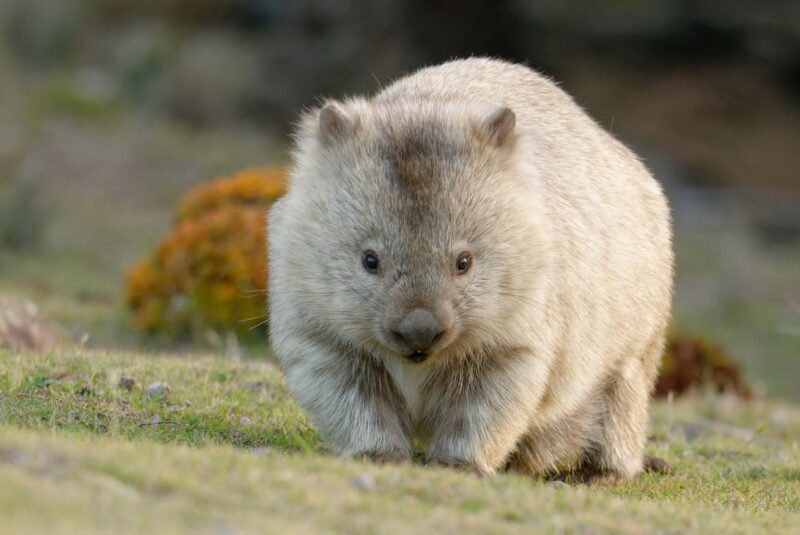Wombats are known for producing cube-shaped poop, a trait that has puzzled scientists for years. This unique ability is tied to their digestive system. Researchers have discovered that wombats create square-shaped feces due to specific muscle contractions in their intestines.
That process helps them mark their territory and communicate with others. By examining this phenomenon, scientists are uncovering more about the fascinating ways animals adapt to their environments.
Table of Contents
ToggleWhy the Square Shape?
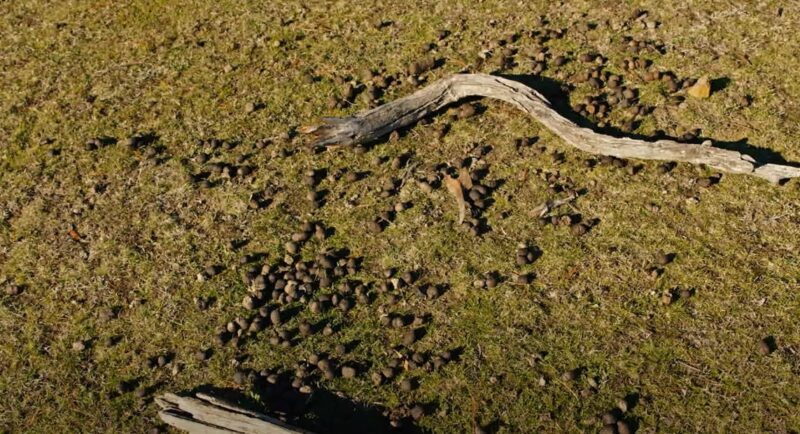
Wombats are famous for producing cube-shaped poop. This odd phenomenon is caused by the animal’s digestive process, specifically the design of its intestines.
Inside a wombat’s 33-foot-long digestive tract, two distinct types of tissue—one stiff and one flexible—work together to mold the poop into cubes.
As the feces move through the intestines, they start as a liquid and gradually firm up as they reach the last 8% of the intestines. This unique process creates small, even cubes that are about 2 centimeters wide.
The longer digestion time of wombats—four times longer than that of humans—also contributes to the cube shape.
During digestion, the intestines extract as much water and nutrients as possible, which results in poop that is much drier and more solid than that of other animals.
Once the feces are firm, the different muscle contractions in the intestines press the feces into cubes before they are excreted.
How Does Wombat Poop Stay Cube-Shaped?
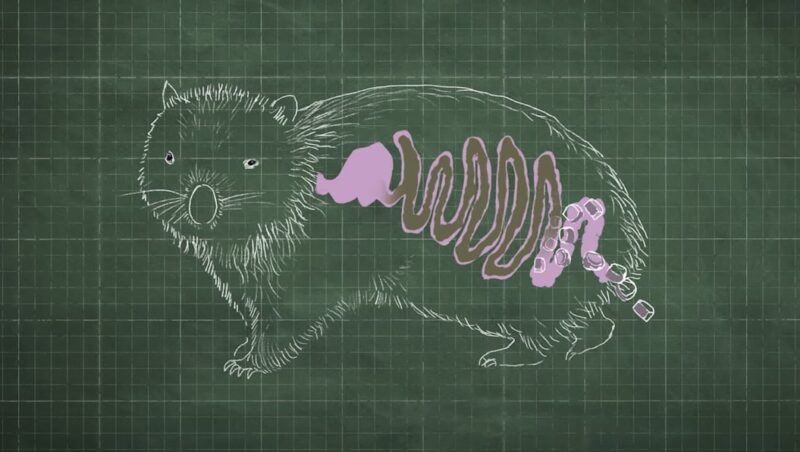
Unlike most animals whose feces are cylindrical or rounded, wombats’ cube-shaped poop has sharp edges because of the varied muscle contractions in their intestines.
This process ensures that the cubes remain intact when the wombat excretes them. This distinctive shape gives wombats an evolutionary advantage.
Wombats place their poop on rocks, logs, and other prominent surfaces to mark their territory. The cube shape ensures the poop stays in place without rolling away, making it easier for other wombats to detect.
Fun Facts About Wombat Poop
- Wombats can produce up to 100 cubes of poop per day.
- Each poop cube measures about 2 centimeters across.
- Wombats use their poop to mark territory and communicate with other wombats.
- The discovery of cube-shaped poop won researchers an Ig Nobel Prize in 2019, an award for unusual scientific achievements.
How Wombats Form Cubes
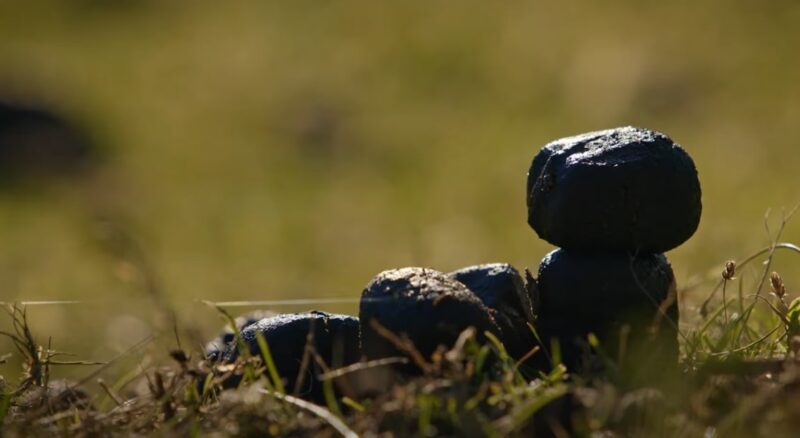
The formation of cube-shaped poop happens in the wombat’s intestines, a process that is both slow and highly specialized. Wombats have intestines that are approximately 33 feet long—ten times the length of their body.
As food passes through, it gradually turns from a liquid into a solid. This transformation happens over a much longer period than in other animals, giving the wombat more time to extract nutrients and water from its food.
During digestion, the intestines apply varying pressure to the feces as they move through. This pressure difference—caused by stiff and flexible sections of the intestinal walls—molds the feces into cubes.
The stiff regions apply more force, creating the edges, while the more flexible regions allow the cubes to take shape. This process happens in the last 8% of the intestine, where the poop also becomes dry and firm.
By the time the poop is excreted, it is already cube-shaped, ready to serve its purpose as a territorial marker.
Wombat Intestine Structure

- Wombat intestines are about 33 feet long, 10 times their body length.
- Feces take longer to form because the wombat’s digestive process is four times slower than humans.
- The poop starts as a liquid but becomes cube-shaped in the final section of the intestines.
Digestive Process Behind Wombat Poop
Wombats have a unique digestive system that plays a critical role in forming their cube-shaped poop. The process is slow, giving the body more time to absorb nutrients and water from the food they eat.
Unlike humans, whose digestion takes one or two days, a wombat’s digestion can take up to four times longer. This extended digestion is key to the firmness and dryness of the feces, a necessary condition for the formation of cubes.
The intestines of a wombat work differently from most animals. As the feces travel through the intestines, they encounter varying pressure levels from different sections of the intestinal wall.
Some sections are stiffer, while others are more flexible. This creates a unique pressure system that gradually shapes the feces into cubes.
The poop solidifies and dries out as it moves through the last part of the intestines, allowing the cubes to maintain their form when excreted.
How Slow Digestion Helps
- Wombats have a digestive process that lasts much longer than other animals, up to four times longer than humans.
- The slow movement through their 33-foot-long intestines allows the feces to firm up gradually, ensuring the cubes stay intact.
- Water and nutrients are efficiently extracted, leaving behind dry, solid poop that holds its shape better.
Wombat Poop and Territory Marking
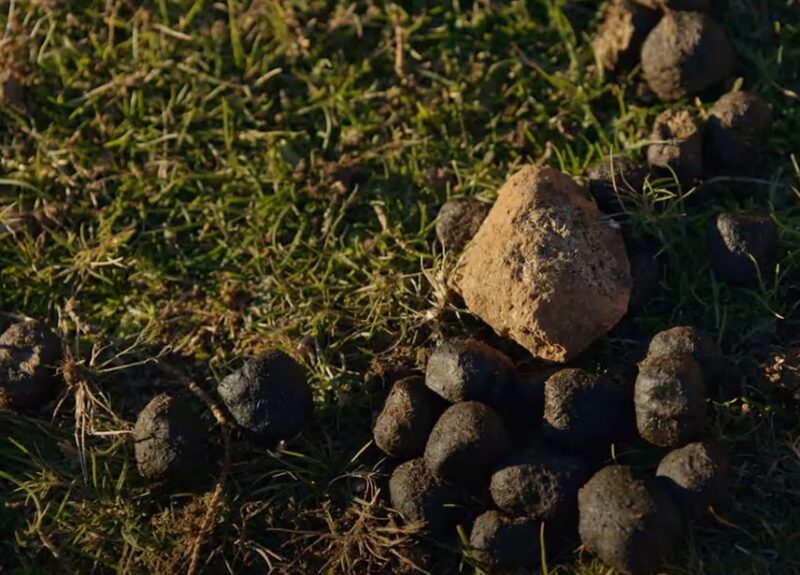
The cube-shaped poop of wombats serves an essential role in marking their territory. Wombats are territorial animals, and they use their feces to communicate with other wombats.
By strategically placing their cube-shaped poop on rocks, logs, and other elevated surfaces, they leave clear markers that signal their presence to others in the area.
The sharp edges of the poop help ensure that it stays in place, unlike rounded feces that might roll away. This makes cube-shaped poop highly effective as a tool for territory marking.
Territory marking helps wombats define their boundaries and avoid conflicts with other wombats. The poop also conveys information about the reproductive status and identity of the individual that left it. This communication system is vital for maintaining social order among wombats.
Why Cube-Shaped Poop Is Ideal for Marking
- The sharp edges prevent the poop from rolling away, ensuring it stays in place.
- Poop is placed on prominent surfaces like rocks and logs to make sure it is easily visible to other wombats.
- Each wombat can produce up to 100 cubes per day, providing plenty of opportunities to mark territory.
FAQs
How long does it take for a wombat to digest food?
Wombats have a slow digestive process that can take up to 14 days. This extended digestion allows them to extract the maximum amount of nutrients and water from their food, which is essential for their cube-shaped poop formation.
Can the shape of wombat poop indicate health problems?
Yes, researchers have found that the shape of a wombat’s poop can be an indicator of its health. In captivity, when the poop is not perfectly cube-shaped, it may signal digestive issues or dehydration, which can be important for caretakers to monitor.
How many wombat species exist?
There are three extant species of wombats: the common wombat (Vombatus ursinus), the southern hairy-nosed wombat (Lasiorhinus latifrons), and the northern hairy-nosed wombat (Lasiorhinus krefftii). All of them share the trait of producing cube-shaped poop.
What do wombats eat?
Wombats primarily eat grasses and other fibrous plants, which are low in water content. This dry, fibrous diet, combined with their long and slow digestion, leads to the formation of firm, cube-shaped poop.
Their ability to extract almost all the water from their food is essential for this process.
Conclusion
The mystery behind why wombat poop is cube-shaped has fascinated researchers for years, and the answer lies in their unique digestive system.
Wombats’ intestines, with their combination of stiff and flexible regions, shape the poop into cubes as it dries and solidifies during the slow digestion process.
Related Posts:
- Hawk vs. Falcon - 10 Key Differences Between These…
- Why Do Dogs Love to Roll in Smelly Things? 7 Things…
- Why Camels Eating Snakes Might Not Be as Strange as It Seems
- Is Your Pet Sick? Here’s Why You Shouldn’t Rely on…
- Why Male Kangaroos Don't Have Pouches - An In-Depth Look
- Why Do Millions of Animals Migrate Across the…

